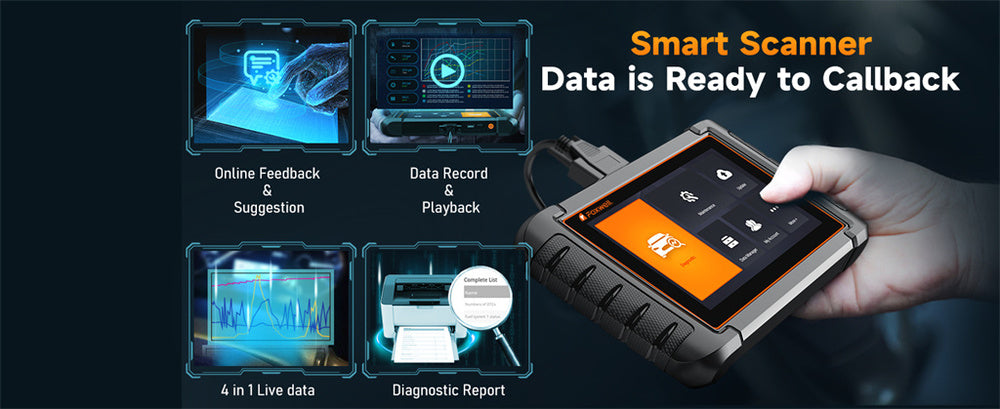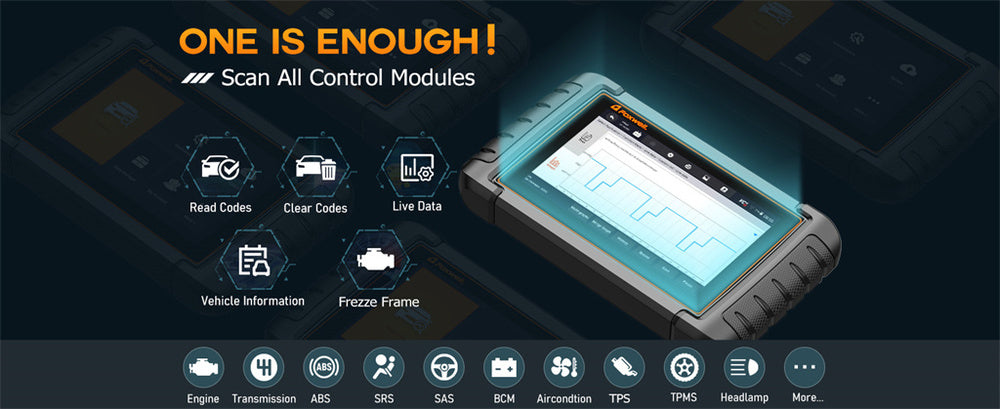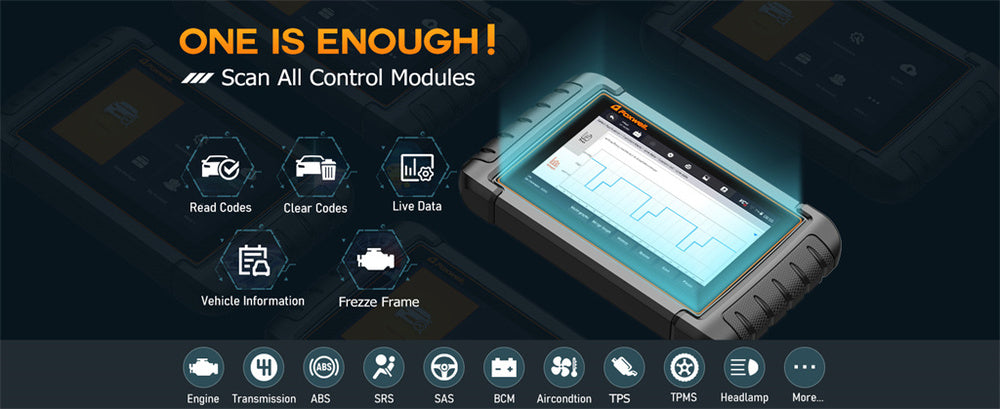Understanding your vehicle's health is more important than ever. With modern cars equipped with complex On-Board Diagnostics systems, drivers can access critical information about engine performance and emissions.
However, relying solely on dashboard indicators often leaves many issues undetected until they escalate into costly repairs.
This is where OBD2 scanners become invaluable tools. They provide detailed diagnostics and real-time data, empowering vehicle owners to make informed maintenance decisions.
Here, we will explore the OBD2 system, the limitations of dashboard diagnostics, the necessity of scanners, and practical tips for effectively using diagnostic tools to ensure your vehicle runs smoothly.
How Does an OBD2 System Work?

Onboard diagnostics systems have become an essential feature of modern vehicles, monitoring and reporting on the health of the engine and other systems.
At its core, OBD2 uses a network of sensors and control units to gather data regarding engine performance, emissions levels, and diagnostic trouble codes (DTCs).
This data is transmitted through a standard interface so mechanics and technicians can assess vehicle conditions more efficiently.
Why Can't You Rely Solely on Your Vehicle's Dashboard?
While modern vehicle dashboards provide essential information such as speed, fuel levels, and temperature readings, they often need more capability to diagnose deeper issues effectively.
Warning lights on the dashboard may only activate once an issue becomes severe - potentially leaving a wide variety of potential problems undetected until they escalate into more significant concerns.
Dashboards typically only present basic information and don't offer detailed diagnostic trouble codes (DTCs). Because of this lack of comprehensive data, vehicle owners may remain unaware of potential engine or system issues that could be developing.
Relying solely on your dashboard may result in missed early warnings.
For instance, if a sensor indicates a minor problem but no warning light illuminates immediately, a driver may wait to take action until a more serious failure has occurred —delaying repairs as the initial issue could worsen into something much more significant.
By failing to properly diagnose their vehicle's issues early, owners may incur higher repair costs once issues are discovered.
Over time, problems that could have been caught through proper diagnostics become more severe and require costly repairs, necessitating more comprehensive diagnostic tools for effective vehicle maintenance.
Scanners for Vehicle Maintenance
OBD2 scanners are essential tools for anyone serious about maintaining their vehicle, as they offer access to data not available through dashboards alone.
OBD2 scanners allow users to gain access to diagnostic trouble codes (DTCs) and sensor information gathered on the car to create a comprehensive view of its health and performance.
Foxwell NT1009 scanners are specifically designed to read and clear codes, providing users with insight into any specific issues affecting their vehicles.
In addition, real-time data streaming enables drivers to monitor engine performance while driving; this capability is beneficial in diagnosing intermittent problems that might not show up during static diagnostic checks.
Depth of information allows vehicle owners to detect problems early, providing timely solutions and interventions.
Such preventive measures save both time and money, as issues are addressed before becoming more costly repairs.
Investing in a quality OBD2 scanner is essential to effective vehicle maintenance and will greatly enhance the ownership experience. Below are steps and tips for using one.
Steps and Tips for Using a Scanner
Locate an OBD2 Port: Look under your dashboard near where the driver sits to locate this port.
- Install the Foxwell NT1009: Plug it securely into an OBD2 port on your vehicle.
- Switch on the Ignition: Place your vehicle in the "On" position without starting its engine and activate its ignition system.
- Powering on the Scanner: Once activated, the NT1009 will launch itself automatically.
- Select Diagnostic Functions: Select options such as reading DTCs or live data streaming.
- Read DTCs: Locate and record any diagnostic trouble codes displayed.
- Analyze Live Data: Track real-time performance to spot issues quickly.
- Clear Codes: Reset warning lights once all issues have been addressed and cleared up.
- Consult Resources: Referring to the NT1009 manual is helpful in terms of code definitions and further guidance.
- Conduct Regular Diagnostics: Conduct diagnostics at regular intervals to detect issues early.
Following these simple steps will enable you to effectively use the Foxwell NT1009 to maintain the health of your vehicle.
Common Types of OBD2 Scanners
Market availability features various OBD2 scanners designed to address different needs:
- Basic Code Readers:These devices allow DIY enthusiasts to identify and clear DTCs easily. Perfect for basic diagnostics.
- Enhanced Scanners:They provide more in-depth data and functionality, such as live data streaming and advanced diagnostics, suitable for professional mechanics.
- Professional Scanners:These scanners provide more comprehensive diagnostic capabilities that are ideal for experienced mechanics.
High-end tools provide extensive vehicle coverage, advanced functions, and manufacturer-specific features, making them perfect for automotive repair shops.

Identifying Common Faults from OBD2 Data
Understanding OBD2 Data's Implications Knowledge of OBD2 data interpretation is integral in diagnosing issues effectively - here are a few examples:
P0300 to P0399 Codes: These error messages indicate engine misfires and could indicate issues with ignition components or fuel delivery.
P0420 Code: Refers to catalytic converter efficiency; any problem in its operation requires immediate attention in order to avoid further damage to the vehicle.
P0171 and P0174 codes indicate a lean air-fuel mixture, usually due to vacuum leaks or poor delivery issues.
Conclusion
Investing in an OBD2 scanner is more than a mere matter of convenience: it's essential for effective vehicle maintenance.
With vehicles becoming ever more complex, relying solely on dashboard indicators may result in missed problems or misdiagnoses; professional-grade scanners provide extensive data access and diagnostic capabilities needed for preventative maintenance and timely repairs, helping vehicle owners ensure their cars operate optimally while decreasing costly repair bills later down the line.
FAQs
What is the OBD port for on-board diagnostics?
The OBD2 port allows a diagnostic tool or scanner to connect to the vehicle's On-Board Diagnostics (OBD) system. It provides access to vehicle data, including diagnostic trouble codes (DTCs), to identify and diagnose issues within the car's engine and emissions systems.
What does the on-board diagnostic system do?
The OBD2 system monitors the performance of a vehicle's engine and emissions systems, detecting issues and storing diagnostic trouble codes (DTCs) when something goes wrong. It provides real-time data, helping mechanics or drivers identify and fix problems early.
What is the difference between diagnostics and OBD3?
Diagnostics refers to the overall process of identifying and troubleshooting issues in a vehicle. OBD2 is a specific system within vehicles that helps with this process by collecting data and storing trouble codes, which can be accessed through an OBD port to perform diagnostics.




Leave a comment
This site is protected by hCaptcha and the hCaptcha Privacy Policy and Terms of Service apply.